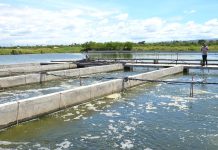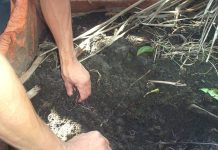The plant was intended for healing. But when it was discovered by the outside world, it was used for entertainment and other purposes.
Tobacco, known in the science world as Nicotiana tabacum, is a case in point. In the Amazon, where it originated, tobacco – where it was generally portrayed as a “master plant” – was used as the main curing tool of healers, according to a study published in Frontiers in Pharmacology.
“For the Amazonian natives, the link between medicine and tobacco is so basic, that the generic term for ‘healer’ in several local languages is etymologically linked to the word for ‘tobacco,’ for instance for the Yuracaré people, literally means ‘he who eats tobacco,’” wrote the researchers in their paper.
The Amazonian Keshwa people described tobacco as the “father of all plants.” Other natives from the area called it the “director of all medicinal plants.”
“In light of these descriptions, it seems striking that this plant in the rest of the world is used as a recreational drug, with tobacco smoking being the most prevalent addictive behavior across the planet,” the researchers noted.
Popularity of tobacco
It was Christopher Columbus, who was credited for popularizing it. After discovering America in 1521, he brought a few leaves and seeds with him back to Europe. Dr. Anne Charlton, author of “Medicinal uses of tobacco in history,” published by the Journal of the Royal Society of Medicine, noted: “Columbus noted that dried leaves (of tobacco) were carried by a man in a canoe near the island of Ferdinandina because they were esteemed for their healthfulness.
“In the same year, two members of his crew observed people in what is now Cuba carrying a burning torch that contained tobacco, the purpose of which (it later emerged) was to disinfect and help ward off disease and fatigue,” Charlton added.
History records showed that tobacco was introduced into the Philippines during the era of Spanish colonization when the Augustinians brought some seeds for cultivation. In 1686, William Dampier visited Mindanao and observed that smoking was already a prevalent custom.
But it wasn’t in the late 19th century that cigarettes became popular. Thanks to the machine invented by James Bonsack, which automated cigarette production. The increase in production paved the way to the tremendous growth in the tobacco industry.
These days, tobacco carries a lot of negative baggage. Tobacco “has always had negative press,” Danny Ebelhar, an American tobacco farmer from Owensboro, was quoted as saying by Bloomberg News. “But now, it may come back to be a benefit to mankind.”
Useful therapeutic effects
In certain neurologic and psychiatric conditions, medical science has found nicotine – the naturally produced alkaloid in tobacco plants – have some useful therapeutic effects.
“Nicotine has long been a useful tool for researchers interested in probing the nervous system. Although the health risks associated with its intake via tobacco products has tended to tarnish society’s view of nicotine, it is important to recognize that nicotine may have therapeutic potential with a number of disease states,” pointed out Dr. Ovid Pomerlau, director of the Behavioral Medicine Program at the University of Michigan.
There are studies, mostly conducted in the United States, which showed that nicotine can normalize some of the psychophysiological deficits seen in patients with schizophrenia, a long-term mental disorder characterized by loss of contact with reality, hallucinations, delusions, and abnormal thinking.
“We did not set out to study nicotine, we set out to study schizophrenia,” explained Dr. Robert Freedman, of the Department of Psychiatry at the University of Colorado. “But anyone who spends any time with schizophrenia soon realizes that they smoke a great deal. Indeed, a much higher percentage of schizophrenics, both male and female, are heavy smokers than in the general population, and they smoke the higher tar brands.”
The use of tobacco in medicine is not only confined to industrialized countries. The Philippines has recognized it, too. “Tobacco has always been considered a medicinal plant,” said the National Tobacco Authority (NTA) on its website. “Before its use as a smoking material, it has been used as a traditional medicine for common illnesses.”
The NTA reported that its current efforts involve studies on the phytochemistry, antimicrobial activity and pharmacological properties of tobacco. Tobacco-based ointments and liniments are also being evaluated.
Uses of by-products and wastes
The NTA is also experimenting with possible uses of by-products and wastes from tobacco after being processed. Being biodegradable, stalks, top leaves, stems, scraps, and dusts of tobacco “are particularly appealing alternatives to synthetic pesticides and fertilizers especially during these times of high level consciousness for ‘environment-friendly’ technologies, and the fact that synthetic fertilizers and pesticides are very expensive.”
Studies conducted by NTA’s crop protection group found that tobacco scraps and waste products applied at 200 kilograms per hectare can effectively control golden kuhol, the pests that attack rice fields. This practice also increased the yield, NTA said.
The NTA is also promoting tobacco aqueous spray and tobacco dust as alternative pesticides. Tobacco spray applied at 10-days intervals can reduce the population of beanfly and bean aphids by 89% and 97%, respectively. Tobacco dust, on the other hand, can effectively kill 80 to 90% of tomato cutworm and beanfly, respectively.
Leafhoppers, thrips, and corn earthworm can also be controlled using either tobacco spray or dust. The stalks and midribs of tobacco were already proven to be excellent media for mushroom culture. In fact, this technology is already commercialized.
Alternative pesticides
Meanwhile, the Florida-based Educational Concerns for Hunger Organization (ECHO) has developed two tobacco sprays against some pests and diseases. In the first tobacco spray, 250 grams of dried tobacco leaves, stems or dust are boiled in four liters of water for 20 minutes. The boiled water is allowed to cool and then filtered through layered cotton cloth. Four more liters of water are added to the solution. Fifty grams of bar soap are also added; laundry soaps are not recommended.
The solution can be poured into sorghum and corn funnels to kill stalk borers. It can also be applied as a soil drench around plants to kill cutworms. Beans can be sprayed with the solution to prevent rust disease and also to control aphids, beetles, cabbage worms, caterpillars, grain weevils, leaf miners, mites, stem borers and thrips.
In addition, the solution has been found to be effective against biting or sucking insects. When applied weekly with a brush, it is effective against ticks and fleas in cattle.
In the second tobacco spray, one kilogram of crushed or bruised tobacco stalks and leaves are soaked in 15 liters of water for 24 hours. The solution is then filtered after which three to five tablespoons of liquid soap is added. Once done, it is ready for use.
“Use this tobacco spray in the evening to allow it to work at night,” the ECHO explains, adding that it must be sprayed on potatoes, peppers, tomatoes, eggplant, or any plant in the Solanaceae family in order to prevent the spread of viruses.
The ECHO, however, issued this warning: “Do not let people or animals drink the solution, and when spraying, wear protective clothing – especially a mask, or apply solutions with a watering can only. Do not eat vegetables within four days of application and wash them carefully when you do.”
Although more research needs to be done to look into the possible health effects of using tobacco as a pesticide, the promising results of these studies could help tobacco farmers improve their livelihoods by providing a new market for their products.
Source of food and feeds
The NTA is also conducting some research on the use of tobacco as a source of food and feeds. It found that a very high quality protein (called fraction-1 protein) can be extracted from its leaves for human consumption. The seeds are free from nicotine and are rich in protein (25%) and oil (35%). With this finding, NTA said, “they are good sources of edible and industrial-type oils.”
Sometime in the early 1990s, NTA was able to make pastry products like polvoron, pastillas, cookies, doughnuts and pancakes with ground tobacco seeds substituting for up to 30% of the flour requirements.
In its study, NTA found that tobacco seeds can also substitute for sesame seeds or peanuts in brittle candies. Taste tests conducted on elementary pupils, high school students, college students, and professionals showed the high acceptability of these products with ratings of “liked” to “liked a lot” using the Smiley Test.
“Our future activities include the extraction, purification, and conversion of the tobacco leaf protein (fraction1-protein) into familiar food items such as cheese, gelatin, nutri-crunch (kropeck) and as major component of beverages,” the NTA said.
As feed, tobacco seeds can substitute for 25% of the commercial feed ingredients for broilers. A study conducted on tilapia showed that up to 70% of their feeds could be substituted with tobacco seeds. As for the seed cake obtained after the extraction of the oil, it can be used as protein-rich feed for cattle and horses.
“The potential of tobacco as source of food and feeds are very promising,” the NTA said. “If fully tapped, it will not extend the usefulness of tobacco but more importantly, will be a positive factor on easing the increasing demand for food.”
But that’s not all. Tobacco stalks are woody and pliable while the midribs are pulpy. “As such, they are suitable for the manufacture of particleboard, paper, handicraft, and pulp,” the NTA said. “Being able to produce matured stalks within six months, tobacco also has the distinct advantage over the traditionally used tree species, which require about five years to become economically important.”
The NTA was able to manufacture homogeneous and three-layered types of particleboards from tobacco stalks. Both reportedly passed the standards set for commercial-type particleboards. These can be used as low cost boards for mass housing.
“Tobacco has been cultivated mainly for its leaves,” the NTA said. “The very high economic returns from the leaves favored this practice, hence, neglecting the potentials of the other parts of the plant. However, with the current emphasis on the development of other products from tobacco and with the very encouraging results that we are getting, the NTA is confident of doing its share in promoting the industrialization of the countryside.”
As Joaquin T. Ortega, former NTA administrator, puts it: “The tobacco industry is beset with problems now, but with the development of other tobacco products, tobacco may still prove to be the crop of the future.”






